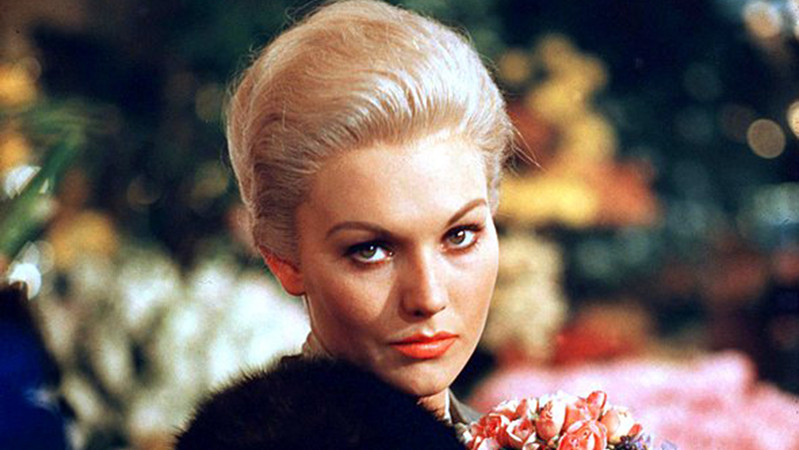
So I find myself once again challenged by the topic and conversation this list brings me. There’s so many great films out there and so many to choose from that there’s no way I can do this without feeling somewhat empty because I know there’s a long list of greats I’m not mentioning here. But I must choose what I must choose and decide based only on myself and no one else. If there’s anything I didn’t mention I plead with all of you reading this to share them, there’s too many to count.
Film is in my mind the greatest art form of the last century. More than any other medium film has the ability to tell stories, create experiences, and puzzle for generations more than any other art form.
For anyone who tries to tell me that music, painting, dancing, or drawing is the greatest art form my response will always be that film does all of those at once. This is what constitutes ‘Cinema Language’. This is the combination of cinematography, sound design, production, lighting, camera placement, direction, and acting that creates the experience we know as the motion pictures.
And these 10 films I’m going to highlight here today personify the immense power and technique film has to achieve a level of communication with its audience that no other art form can do. So these are my picks for 10 Films that are Perfect for Studying Cinema Language.
10. Lawrence of Arabia (1962)
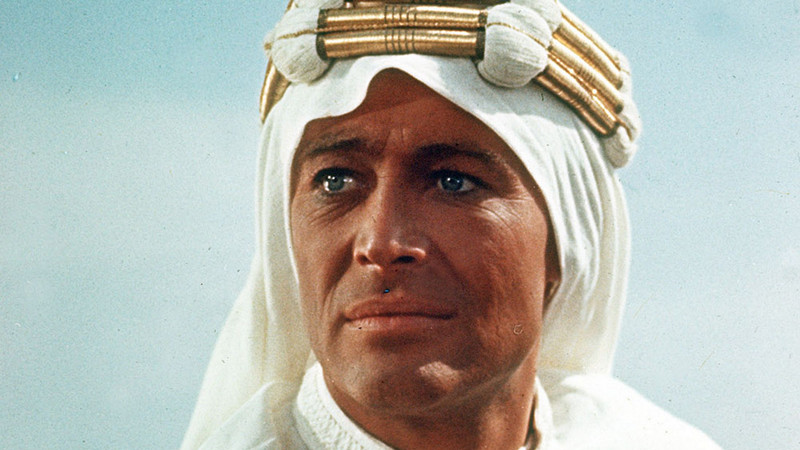
David Lean was in a class by himself. His visual poetry was the stuff of legends, there’s probably no other director who so gracefully conveyed the majesty of the world. He made images so captivating that they stand in our minds more than most do. “Lawrence of Arabia” is possibly his greatest achievement, the cliché thing I could say is that almost every shot in this is wallpaper worthy. Which is completely true.
But more specifically this is a fine portrait of a man who’s larger than life and the world around him that was his playground. T.E. Lawrence was one of the most enigmatic people who’s ever lived and even in so many beautiful shots in which he’s a dot on the screen his presence is extravagant.
This is the kind of film that’s built entirely off of imagination and dreams. The kind of dream that envisions a spec far off in the horizon growing into a man, the kind of vision that sees a small man lost in a barren wasteland who conquers everything that stands before him and reigns supreme. In a world full of mysteries and fascinations this is a film about man who overcomes so much and becomes larger than life.
9. The Cabinet of Dr. Caligari (1920)
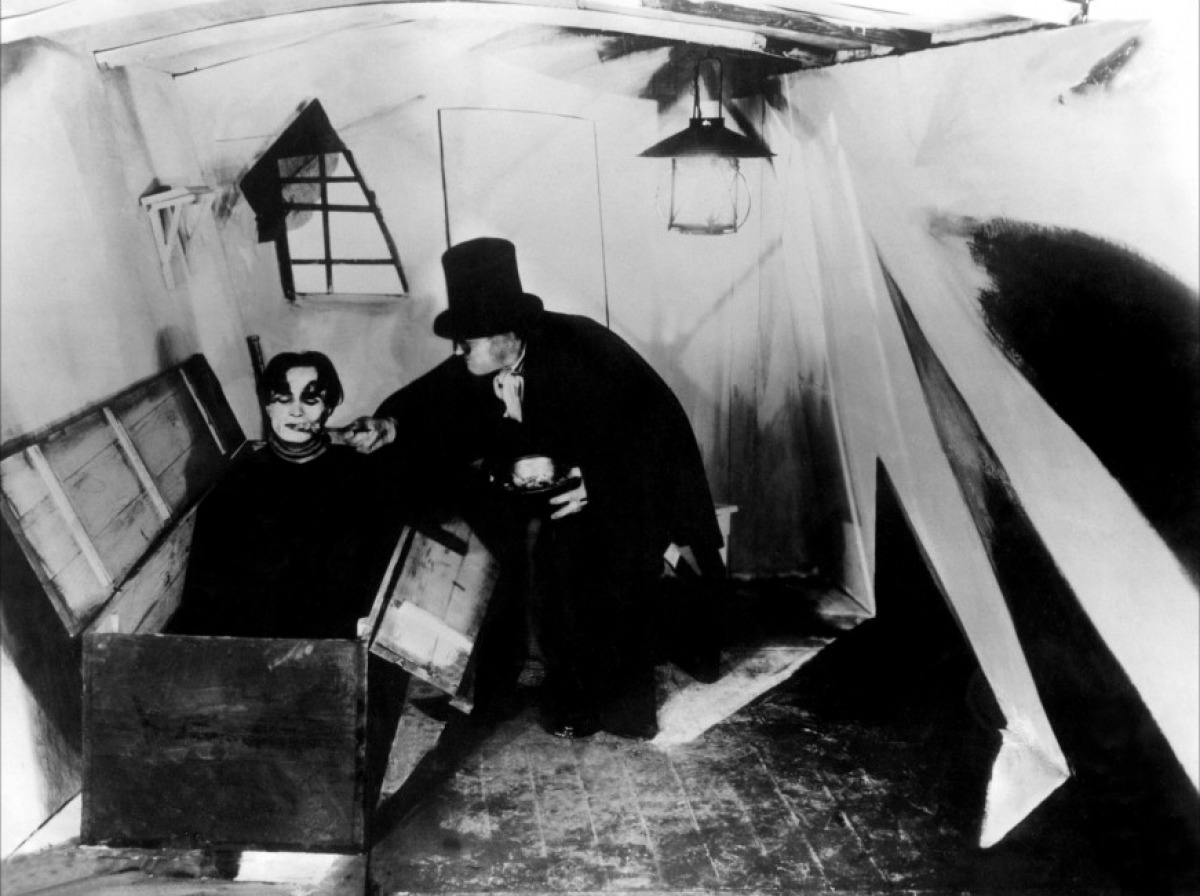
There’s perhaps no movement in film that was more essential and important than German Expressionism. At a time when American films were largely trademarked by the comedies of Chaplin and Keaton, Germany was living in a world of depression and isolation.
Much of the feeling going through their country at the time was being conveyed in the dark, twisted material of their films. I can choose almost any film from this time period but I’m going with the one that started it all, “The Cabinet of Dr. Caligari”.
The visual style of the film is like something out of an obscene nightmare, sets and locations twisted and obscured into bizarre and macabre dread. And fittingly so because the film itself largely takes place in the broken mind set of the mentally insane.
The sets were characterized by stokes of bold black paint to create shadows, jagged points and curves stretched to the absolute limit, and angles that are anything but right. This was during a time when most films were depicted in a realistic setting, but this was fantasy and that’s what film is in a nutshell.
8. Raging Bull (1980)
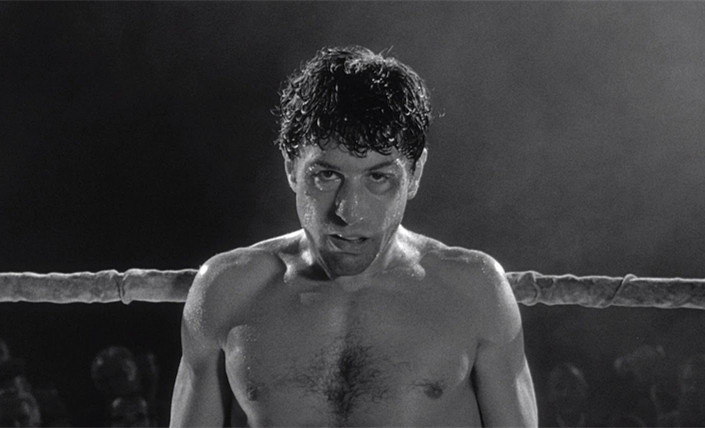
Another article on this website once chose “Raging Bull” as “The Best Edited Film of All Time”. Now of course that’s up for debate but you won’t hear much arguing from me. Martin Scorsese pieces together a great street story that captures an entire life and all the highs and lows that come with it.
But what punctuates the films incredible power is the raw cinematography by Michael Chapman, the brilliant editing by Thelma Schoonmaker, and sound design by Michael Evje and Gary S. Gerlich (among many others but there’s too many to count). Where most boxing films placed the camera in the crowd and show the action from a distance; Scorsese and Chapman place the camera inside the ring and bring us full force into the intimate brutality of the fighting.
Edited together by Schoonmaker where the ring itself is distorted to greatest emphasize the nature of what’s happening and mixed with a combination of different animal sounds to show how Jake LaMotta is a human animal. What was a simple boxing match to us turns into a cathartic outpouring for LaMotta; a man at significant lows in his life using physical violence in the ring as an outlive for all of his insecurities outside of it.
But more striking, to me at least, is the moments outside the ring where Jake is picking up Vickie by the pool or when they’re spending time at home. There’s a world of dreams and aspirations in the textures and environments that’s absolutely beautiful to behold.
7. The Godfather (1972)
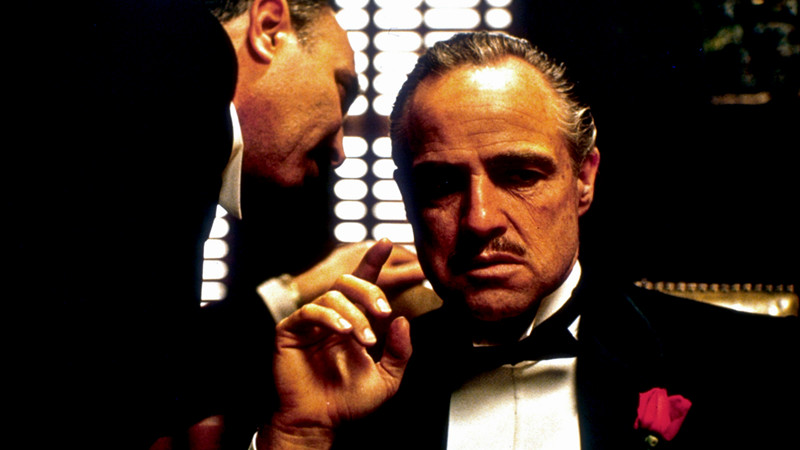
“The Godfather” is a film that can pretty much be used in studying any category, let alone cinema language. “The Godfather” helped usher in a new style of cinematography. Prior to this films were over lit so that they could be seen in drive-ins, whether of nor the shot would’ve looked better with darker lighting didn’t matter because the purpose was for the movies to be seen.
“The Godfather” intentionally used dark shadows and dimmer lighting, this led to the film actually having two different prints so a lighter one could be used for drive-ins and darker ones could be used for indoor theaters. Cinematographer, Gordon Willis, described the cinematography as based on evil.
The opening scenes of the film has a stark contrast with the bright outdoor scenes of the wedding to the dark scenes indoors as Vito Corleone is arranging revenge on behalf of others. Another innovation was the use of tungstens for outdoor scenes as opposed to indoor. Willis wanted to make a natural looking orange filter for the film, long before the days of digital color grading.
The aesthetic of “The Godfather” is based largely on the themes of principals, ethics, and morals. The film holds a heavy weight of tradition and history in its story and the look and presentation of the film adds to its sub-textual sense of moral ambiguity.
Conveying a world of organized crime in which these people, ironically, are the good ones. I could go on further but let’s face it, all of you probably know this already because this is an all-time great in cinema.
6. Alphaville (1965)
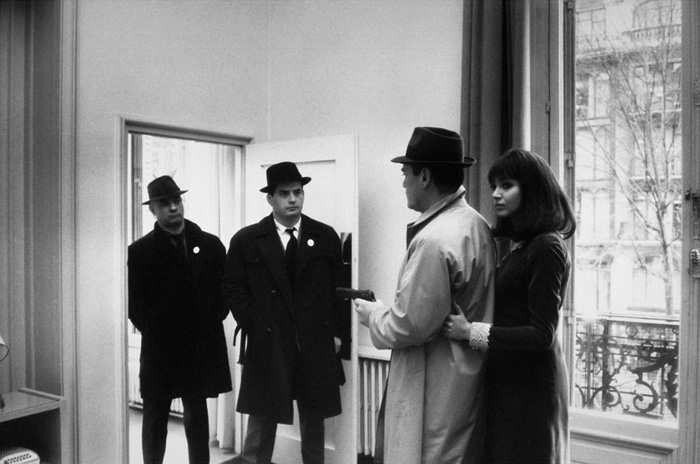
I could’ve easily chosen “Breathless”, but admittedly this is a personal favorite of mine. “Alphaville” is a seamless blend of film-noir and science fiction, nearly 20 years before “Blade Runner”. First things first this is, above all things, a satire of science, technology, comic books, sci-fi, and detective genres at the time.
The putative theme of the films throughout is the feeling of “love” and artistic integrity over logic and advancement. The whole thing never takes itself too seriously and has a tone that’s largely tongue-and-cheek, Godard was a jokester when you examined his work in “Cahiers du cinema” and he shows his funny bone in here as well.
Raoul Coutard has a cinematography is the film that shows the coldness of the set design, built largely off of mid 60’s architecture in Paris with large, blocky building stacked on top of one another and endless spiral staircases.
The ingenuity of science fiction was that it was a warning to us of where we’re going. When you look at the cultural aesthetic of “Alphaville” it’s clear what that warning to its viewers was, that this wasn’t the future because we’re already living in “Alphaville”.